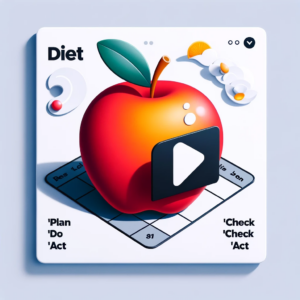
Alternatives that will unleash your team’s agility
In my time in the Agile world, Scrum as a working model is still seen as a pioneer in many companies. You only need to look at the infinite number of positions as Scrum Master that are offered every day on LinkedIn. In many of them, the Scrum framework fits their needs “perfectly”. And I quote in quotation marks because it is curious that companies with different products and customers find that the same working model allows them to deliver value quickly.
As an Agile Coach, I have encountered a hidden reality: Scrum does not work as expected. Sound familiar with what I’m talking about?
Do you also feel the sprints falling apart?
Are you terrified of Planning and think you are playing dice by estimating?

Maybe it’s time to say goodbye to Scrum and welcome some alternative tools that will bring out the spark your team needs.
Because Scrum IS NOT for all teams!
3 reasons to switch from Scrum to Kanban
I share with you 3 tools to move to Kanban and help the team to improve:
1. Kanban
If you feel like you’re on an emotional roller coaster with Kanban, where the demand comes so fast it feels like you’re running a marathon with a concrete slab on your back, switch to the other side.
With Kanban you can manage the workflow in a more flexible way.
If 40% or more of your demand is running over your Sprint and you have to deliver it, you already have the first sign that Kanban can be your ally.
Study your demand, how it arrives, from whom it arrives, through which channel, and prioritize it as it arrives.
Instead of planning two weeks ahead, create a prioritization matrix with the team according to the demand typology. Define and agree on how you will prioritize it and share it publicly for the avoidance of doubt. Remember, it can always be revised and adapted. In this way, as Product Owner, as the demand comes in, you can prioritize it and place it in the “Next” or “To Do” column. The team, once the prioritization agreements are known, will take, as they are released, the items that are higher, which in turn have a more critical priority.

Planning can be done every three to four weeks, as best suits your needs. The adjustments you may need will be made in real time, adapting to adversities and without having to wait for Refinement.
2. Approach your dailies from a different perspective.
Daily Scrum reports are very useful to see the progress of the team in relation to the sprint goal.
But… if you feel that your dailies have become a mere reporting of “what did I do yesterday” and “what am I going to do today” then something is not working quite right. To put more emphasis on the team’s progress and to be able to resolve blockages and dependencies, adopt the Kanban perspective in the dailies.
Dailies with a Kanban approach take a more structured approach, going from right to left on the Kanban board.

Start with the equipment with the column
DONE
column and take the opportunity to ask, whoever provides the Daily, what has been closed recently.
It is important for everyone to speak freely, in case they have closed a task.
With this round over, we move on to the next round,
WAITING FOR THIRD PARTIES
The tasks are reviewed one by one and a push is made to see what we need to release them. If they are internal resources, it is a good time for the team to empower themselves and volunteer to help colleagues. If at first you find it hard to get it out of them, help them by asking who is most free today so you can lend a hand.
You will see that little by little it will come out of them. Once the locks and dependencies have been dealt with, we go to the
IN PROGRESS
where each of them briefly explains what they are still working on.
At the end of the meeting, the Product Owner can mention the tasks that he/she has placed in the
NEXT
and which, in turn, team members can pick up as they free up work.
TipTry to limit the WIP taking into account the size of the equipment and the capacity.
In this way, you will foster collaboration among them and collective intelligence, and you will avoid bottlenecks or burnout in the most senior employees.
3. We start the diet with Lean
If you feel the team is stuck in an endless cycle of planning and stakeholder meetings, it’s time to adopt Lean thinking.
The Lean philosophy focuses on eliminating waste and optimizing efficiency.
Allow yourself a pause to analyze how you are doing things:
What is the flow rate? We detect what does not add value in order to remove it from the path. Lean does not mean that you stop planning, nor that you do the minimum, but that you do it more efficiently and effectively, really analyzing what has value. When we talk about value we refer to features, processes and meetings, among others.
This exercise can also help you to distribute the work among different team members and to avoid having the veterans always attend certain necessary meetings with stakeholders.

Summarizing
If you feel that Scrum just doesn’t quite fit and is no longer your best friend: adopt a change of pace with these tools.
Remember, agility is not just about following rules, but about finding the right fit for your team and your product. Say goodbye to Scrum and welcome new possibilities. It’s time to unleash the creativity and flexibility of your team.





